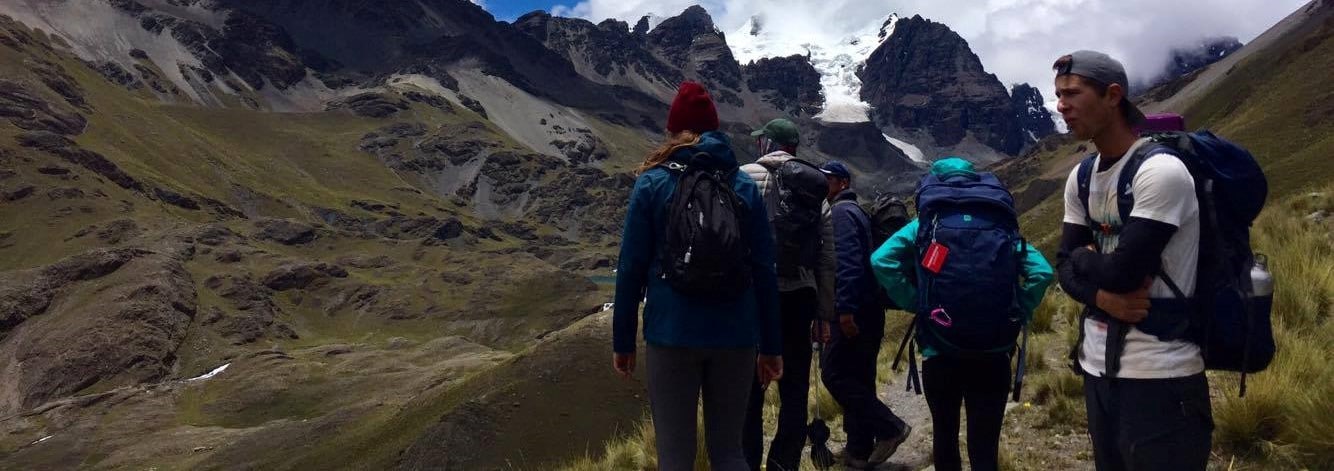Sleeping bags- the basics explained
Down or Synthetic or a combination of the two? 1, 2, 3 or 4 season? Some of the vital questions you should ask when looking to get a new sleeping bag- here is the Quest Overseas basic guide to help you out.
So you have signed up to an expedition. Fantastic- good for you. Health benefits from the exercise and fresh, clean air are all in your grasp. It is needless to say the views should be breath-taking…
However, the wrong sleeping bag could ruin your trip!
All expedition leaders and participants depend on a good night’s sleep in order to be well rested and ready for the challenges of the following day, however it is also crucial to make sure you have the best time possible in the great outdoors.
Let’s start our easy guide with sleeping bag material: down or synthetic?
Down sleeping bags: Down sleeping bags are very light, can be squeezed into a stuff sack, so take up minimal space, and are very efficient at trapping your body heat making sure you stay nice and toasty in even the coldest of condition.
Best places to take one: Crisp, cold, dry environments. The Andean Mountains (for example during one of our treks well 3000m above sea level) provide this environment and campers with down sleeping bags carry less weight, which when at high altitude can make a huge difference.
Worst places to take one: The jungle, cloud forest environments and kayak/sea expeditions! The jungle will make your down material get mouldy and full of fungus. If you get caught in a tropical storm you will be subjected to a wall of water falling from the sky followed quickly by a very, very hot and humid stogey wall of air , which is sadly great for things to grow in. Meanwhile a cloud forest is going to get you wet- this is down to the fact you are walking through the clouds, which by their very nature, are full of water.
Overall: If you buy a down sleeping bag (or any down equipment for that matter) you have to be careful with water. When wet, down clumps together and flattens, losing a lot of its heat retaining capabilities. Therefore, if you happen to get caught in a storm, ensure that you have a 100% waterproof bag liner. (There is also another distinction between duck and goose down- goose is generally regarded as a better heat retaining material).
Synthetic sleeping bags: This material is the go-to for the economically minded backpacker. A tad more bulky and heavy when compared to down sleeping bags.
Best places to take one: Anywhere. Synthetic sleeping bags are very practical and usually very durable. While it should never be intended for a sleeping bag to get wet, these do tend to dry very easily and are often still able to retain head even when a little bit wet. Likewise they are very easy to wash in a washing machine (check washing instructions as they tend to vary).
Worst places to take one: This is not a place, however whenever you are really struggling with the weight of your bag, the comparatively heavier synthetic material can add almost a couple of kilograms to your total bag weight. Synthetic bags are also less efficient at keeping you warm than the lofty duck or goose feather-filled down bags.
Overall: For general all-purpose use, the synthetic material found in a lot of sleeping bags is perfect. Manufacturers are starting to produce a mixture of the two materials, however until they have been perfected (giving you the positives and taking away the problems from the two materials) and the price comes down, a synthetic bag does the job for many.
Ok so now you should have an idea about your sleeping bag material. Lets delve into the world of ‘seasons’- a basic measure of a sleeping bags temperature gauge, ranging from 1 season to 4 season:
1 season: thin and light, a 1 season sleeping bag is designed to keep you covered during the hot summer. 1 season sleeping bags will keep you warm, but always consider that you might not actually need one. However, if you are going to buy a 1 season, you may as well look into simply taking a sleeping bag liner… lighter, easier to clean and does the same job. 1 season sleeping bags will keep you warmer, but always consider that your trip might not actually require a sleeping bag at all!
2 season: Does what it says on the tin. Keeps you comfy in British spring-like conditions. Typically synthetic sleeping bags, they are light but do keep you protected from the weather when it starts to get a little bit chilly.
3 season: Quickly moving up the scale both in temperature protected from and price, this level of sleeping bag can be used in most environments without any problem. You can find relatively priced 3 season sleeping bags, although the synthetic ones do start to get (comparatively) heavy.
4 season: Sleeping bags in the 4 season category are the most expensive of the lot and are designed to keep you warm in the most extreme of wintry conditions. Quite often when you get to the high-quality end of the market you will find a lot of very light but also very efficient down sleeping bags.
Male and Female temperature ratings:
It is very important to remember that women and men feel and react to temperature differently. This cannot be stressed enough. Sleeping bag makers provide you with two different sets of temperatures that their sleeping bags will be able to remain comfortable in. You will most likely know whether you are prone to feeling the cold or not, however you have to pay real attention when reading the specs of a sleeping bag.
What do I use and recommend?
I am constantly moving from one extreme environment to another meaning I need a versatile, trusty sleeping bag in order to give my body the best chance to recover after a hard days project managing or hiking. I have used my 3 season, synthetic sleeping bag extensively for over 4 years now and cannot remember a bad night’s sleep. It is easy to clean, quick to dry and comfortable to sleep in. However, it does weigh quite a lot compared to other brands and models- a compromise I am happy and able to make.
When working in the jungle, I do not use a sleeping bag at all (often not even bringing it)- a sleeping bag liner is an invaluable piece of equipment as it is light and the only way I am able to sleep comfortably in a hot environment.
So…
For the all-purpose, economically-conscious trekker and traveller, a synthetic 3 season sleeping bag should be the category you start to investigate. However, once you come to terms with these basic terms used to categorise sleeping bags, you should start to consider the specifications of each sleeping bag in terms of weight and comfort and extreme temperature limits.
 Author Bio: Matty is a charity project manager and expedition leader for Quest Overseas in Peru and Bolivia. Graduate from University College London, BA History. Currently residing in Colombia and always looking for new adventures to lead his teams on.
Author Bio: Matty is a charity project manager and expedition leader for Quest Overseas in Peru and Bolivia. Graduate from University College London, BA History. Currently residing in Colombia and always looking for new adventures to lead his teams on.


